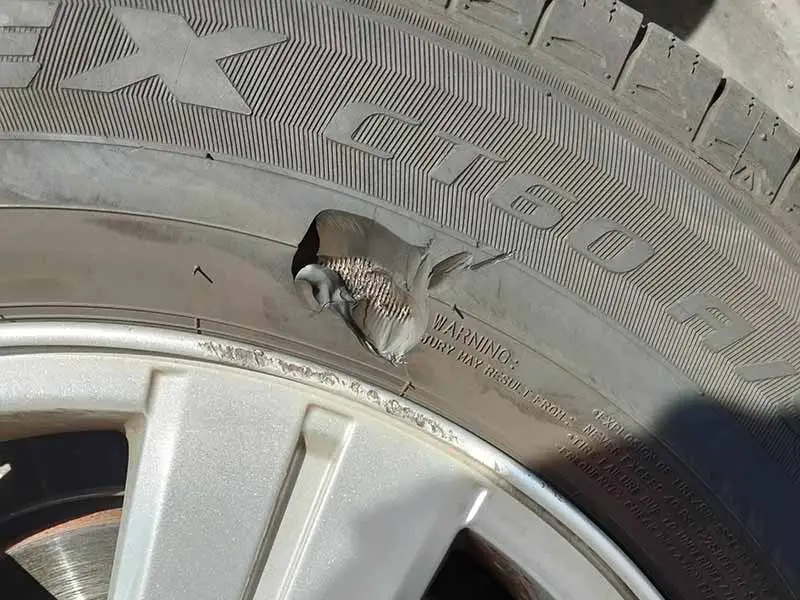Road hazards and sharp objects can cause tire sidewall damage or cuts in the tread area. A cut in your tire’s sidewall or tread that’s not leaking is fortunate since it hasn’t gone flat, but it shouldn’t be ignored.
Sometimes it’s nothing to worry about. Other times it’s a ticking time bomb.
Gash In Tire But Not Losing Air
If your tire isn’t losing air pressure, it should still be inspected by a tire professional to ensure the inner plies and structure haven’t been damaged, which could lead to a tire blowout. Drive carefully to your local tire shop for an inspection.
Minor cosmetic cuts shouldn’t be an issue. This is especially true of gouges in the tire’s tread or the rim protector on the tire’s sidewall. These areas have more rubber protecting the inner structure of the tire.
Let’s take a closer look.
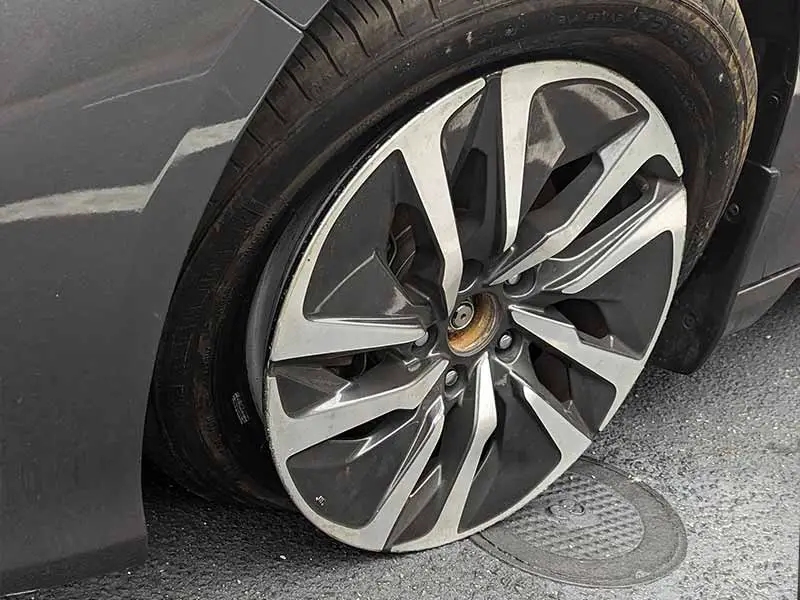
What Do You Do If You Cut The Sidewall Of A Tire?
If you discover that your tire sidewall has a gouge or gash, you’ll want to check to make sure that it isn’t slowly losing air pressure. You can check if it is losing air by spraying the damaged area with soapy water. If the area with the sidewall damage produces bubbles, you have a slow leak.
Tire sidewall damage extreme enough to cause tires to lose air pressure is usually well beyond the point of being repaired. You’ll want to mount a spare in its place and purchase a replacement.
If your tire is holding air pressure and you don’t see exposed cords, you should be able to drive carefully to your local tire shop and have the damage checked out.
If your tire is holding air pressure and you do see exposed cords, you should expect that you’ll need to replace the tire. To be safe, you probably shouldn’t drive your car or truck to the tire shop on the tire. It’s safest to put on a spare or have it towed.
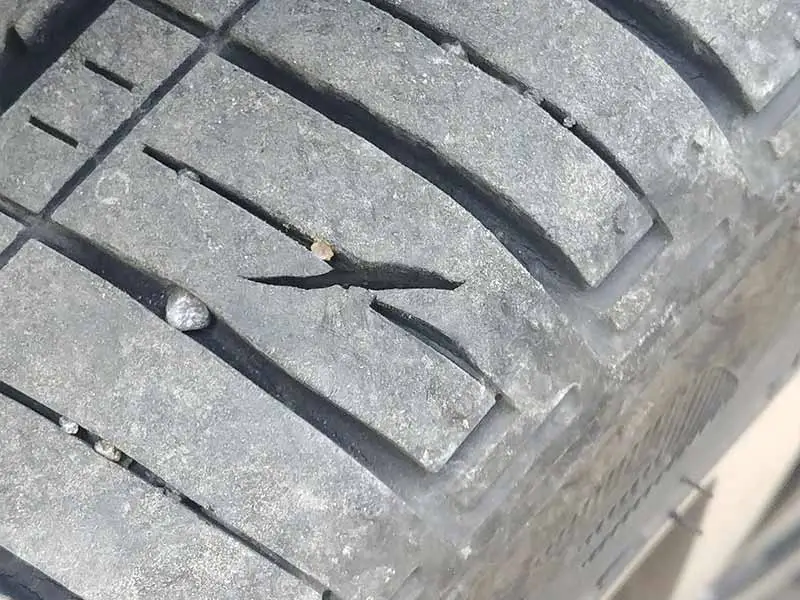
Can You Drive With A Gash In Your Tire?
It can be seriously dangerous to attempt to drive with a gash in your tire if it hasn’t been inspected to determine if the damage has compromised the tire’s structural integrity.
Cosmetic damage that hasn’t exposed cords or steel belts may be safe to continue to use. Damage that has penetrated all the way down to the cords or belts means you should replace the tire.
Can You Repair A Gash In The Sidewall Of A Tire?
Tire sidewall damage typically can’t be repaired since the sidewalls flex and stretch quite a bit. Your tire also heats up with each use which also stresses any repairs made to the sidewall. This makes it unlikely that any tire patch will hold up over time.
If tire sidewall damage is severe enough to be repaired, it should probably be replaced. There are very few situations in which a repaired sidewall will be acceptable.
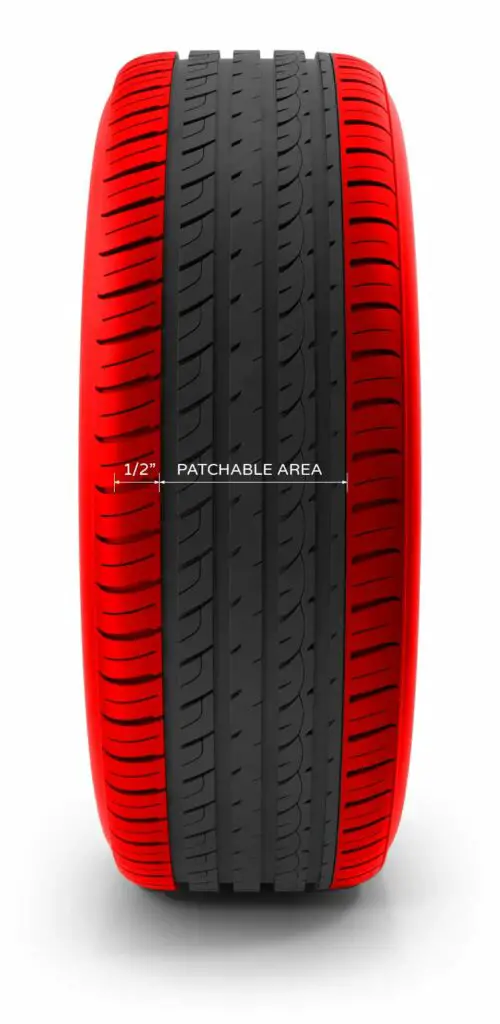
Why Can’t You Repair A Tire Sidewall?
Over time, the patch will fail, leading to a potential flat tire or even a catastrophic blowout at a later time. For this reason, tire professionals will not plug or patch a tire sidewall. Not only for your safety but also to protect themselves from being sued for negligence.
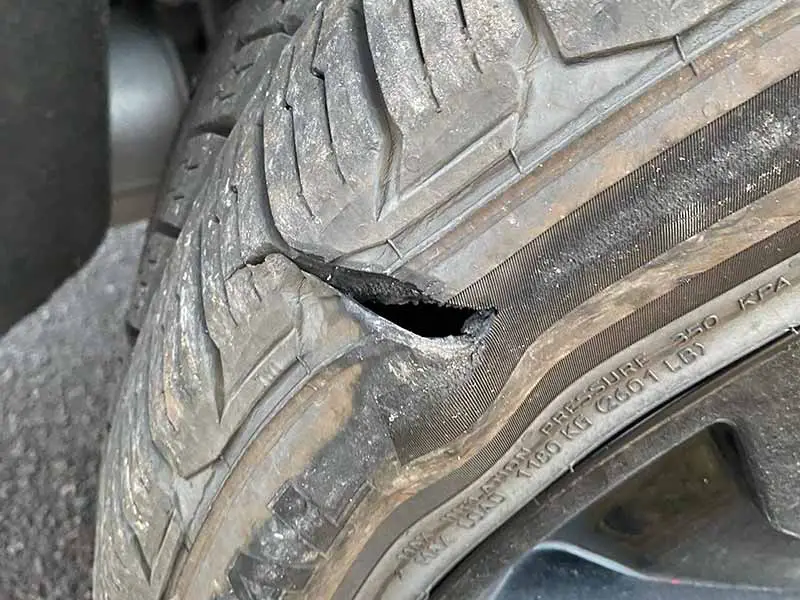
When To Replace A Cut Tire
The difference between sidewall tire damage that requires you to replace the tire and a damaged sidewall that is safe to continue using is usually apparent. But sometimes, it can be a little less clear.
Cosmetic Sidewall Damage
Superficial cuts or gashes in the tire’s sidewall, especially areas with excess rubber, such as a rim protector, shouldn’t be a concern. Even some sidewall tire damage that isn’t too deep could be OK. Tread blocks can also be cut deeply without much worry.
Even cosmetic damage should be inspected by a professional to ensure your safety and the safety of others on the road.
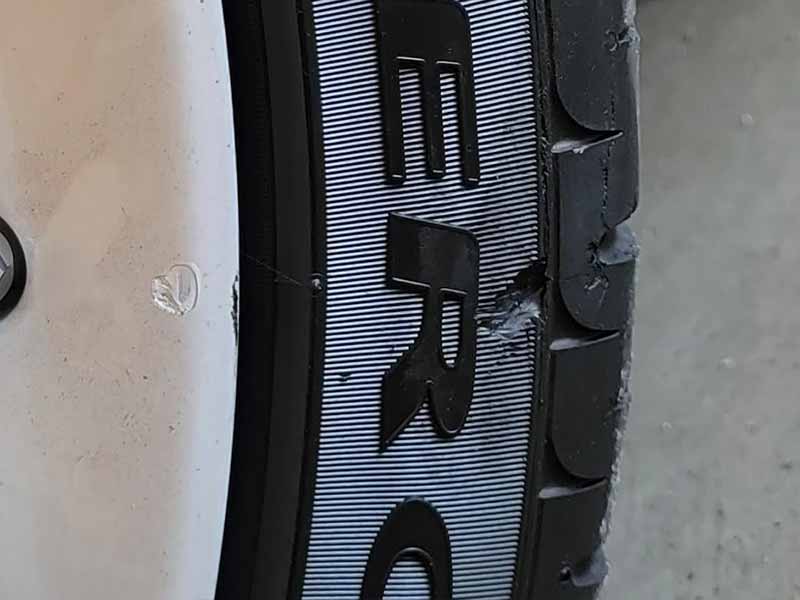
Minor Sidewall Tire Damage
Any damage beyond that which is cosmetic should likely be replaced. No one wants to spend money on new tires, but a tire failure at highway speeds can be deadly. It’s best to play it safe.
Too much stress on exposed cords in your tire sidewall can be very dangerous. Also, sidewall damage that exposes cords makes it much more likely that a pothole or rubbing against a curb could easily cause significant additional damage or a flat tire.
Other Factors To Consider
Regardless of the severity of the sidewall damage, there are a few additional factors to consider when deciding if you should replace the tire:
- Amount Of Tire Wear
- Wear Pattern
- Age Of The Tire
- Previous Tire Damage
If your tire is already nearing the end of its usable life, you should strongly consider going ahead and replacing it.
Tire Wear
Tires should be replaced once they’ve reached 2/32″ of remaining tread left. At this point, they have very little ability to shed water from underneath the contact patch. This means the chances of hydroplaning are significantly increased, and the distance it takes to come to a complete stop in an emergency braking situation is substantially longer.
Wear Pattern
Uneven wear patterns can dramatically shorten the lifespan of your tires. If your tire’s tread has excessive inner or outer wear, cupping, or other types of irregular wear that have shortened the life of your tires, it may be wise to replace them.
Tire Age
Tires older than 7 years typically begin to show signs of dry rot and cracking. The rubber in your tires becomes brittle over time. Eventually, they will lose so much elasticity that they’re at risk of a blowout.
You can find the date of manufacture on the sidewall of your tire. The date code is the last four digits of the DOT code.
Previous Tire Damage
If you have had previous repairs made to the damaged tire, it may be more important to have the tire replaced than to continue driving on it. A tire with damage too close to existing damage can make the larger area between the damaged spots weaker.
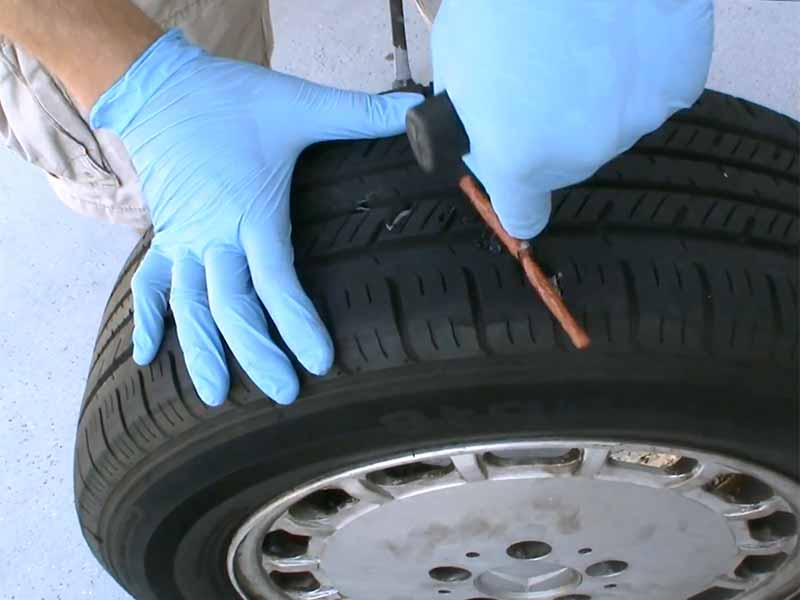
Is Sidewall Damage Covered Under Road Hazard Or Tire Warranties?
There are two methods of attempting to recoup the money you’ve spent on a tire with sidewall damage:
- Warranty
- Insurance
Tire Manufacturers Warranty
Warranties are guarantees of product quality. If the damage you experience is a result of poor workmanship, the tire manufacturer will reimburse you for the remaining tread left unused on the tires.
Tires are considered worn out once the tread wear reaches 2/32″. New tires typically have 10/23″ tread depth. If the manufacturer decides your tire meets the requirement for a refund of the remaining tread, they will provide you a discount based on the percentage of tread wear beyond 2/32″, with 10/32″ equivalent to a free replacement tire.
However, sidewall damage isn’t likely to get covered under the manufacturer’s warranty. The claim will be rejected unless the damage is proven to be a manufacturing defect.
Aftermarket Road Hazard Insurance
Many tire shops will offer road hazard insurance as an add-on purchase for the tires they sell. This optional addition usually covers all accidental damage, including sidewall tire damage. The only damage that road hazard insurance usually doesn’t cover is deliberate abuse.
Resources
Below are some links you may find helpful when learning about tires
Final Thoughts
A tire sidewall gash may not be a problem, but it should be replaced if cords are showing or it has a slow air leak. A gouge in your tire tread is less likely to be a problem, but the same rules apply.
Sidewalls are critical to the structure of your tires and are the most common spot to be cut. Road hazards such as a pothole, curb, or sharp objects in the road can all lead to tire sidewall damage, the means you’ll need to replace a tire. Always have it checked out, and don’t assume it’ll be fine.
Good luck and happy motoring.
